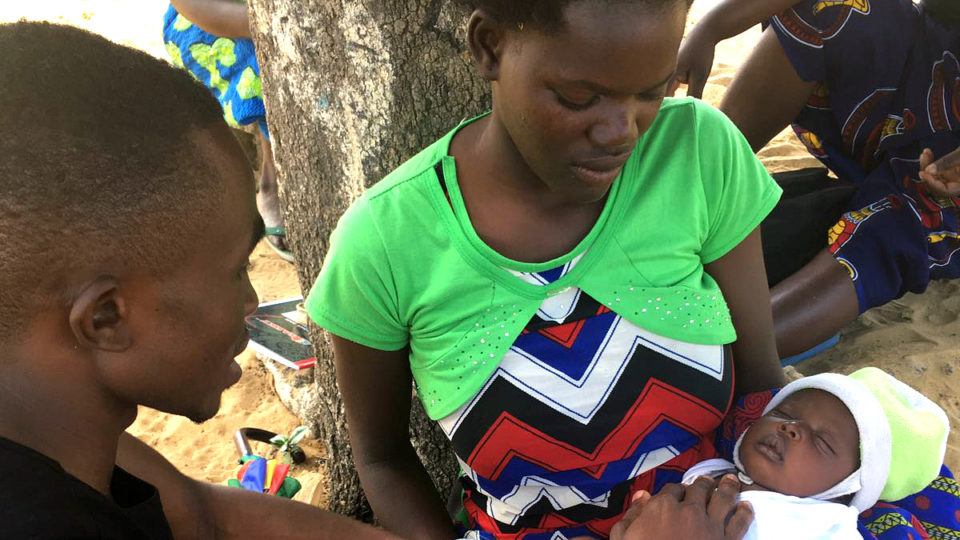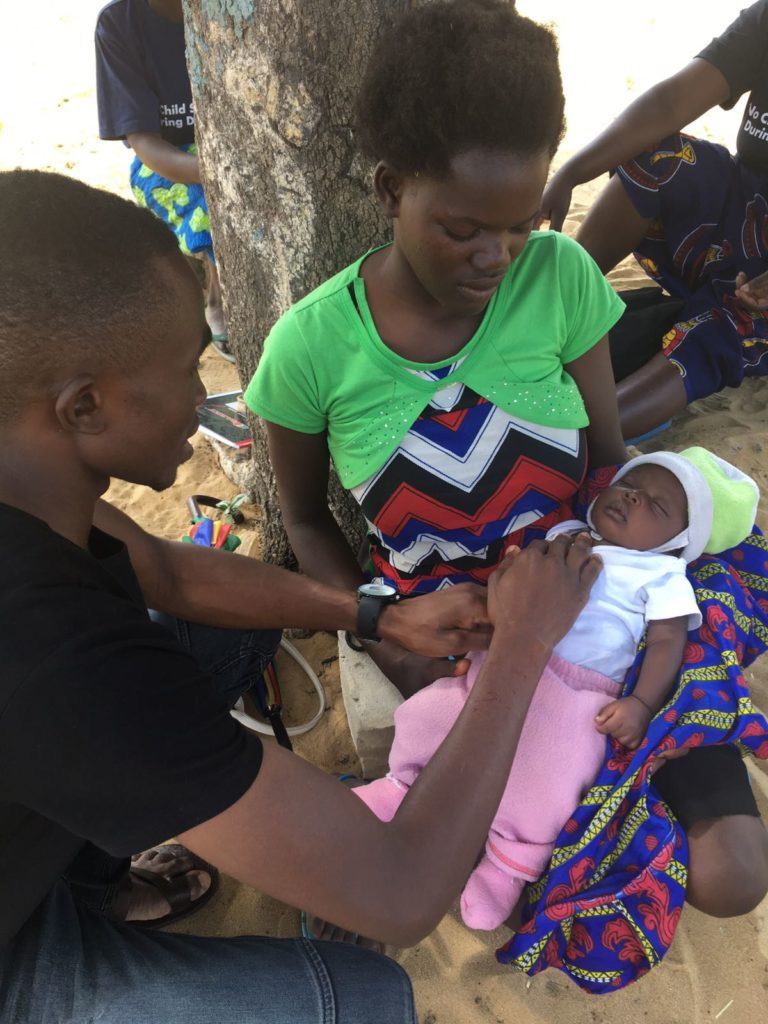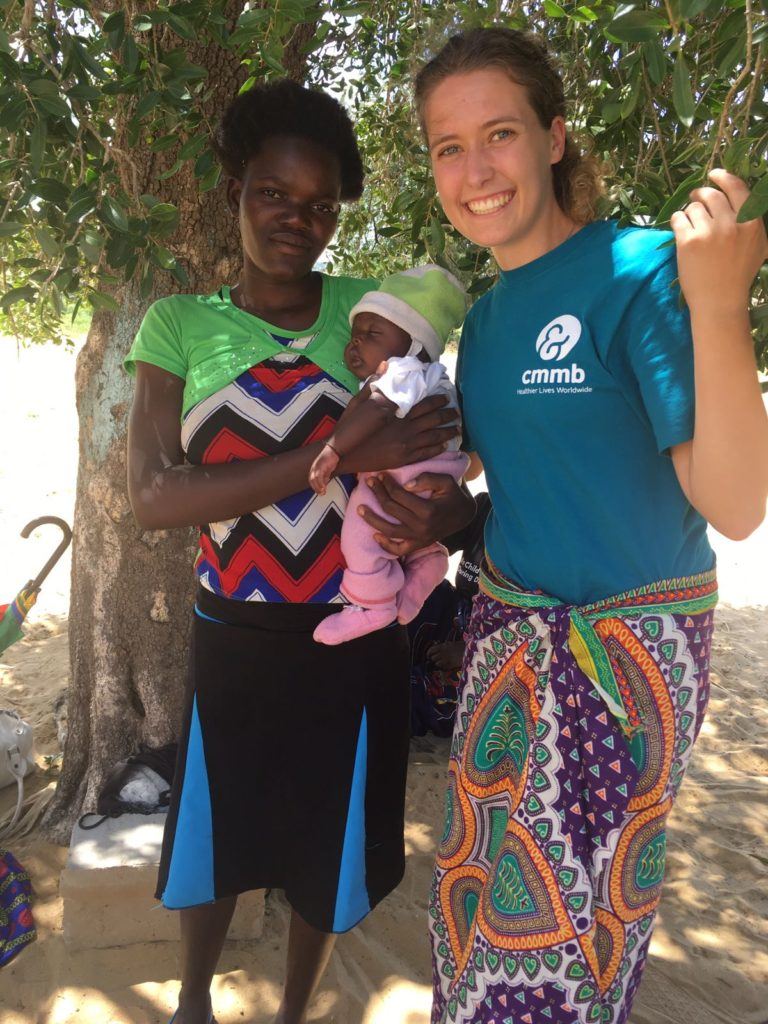First Breath for Baby Rebecca

Our international volunteer, Rose Paneno, recently teamed up with Patrick Chansa, an in-charge nurse from a rural health facility in Mwandi, Zambia to tell the story of how knowledge and resources really can save lives.
It was one thirty in the morning, and there was a pounding on Patrick’s door. A young woman stood there, frantically gesturing to the oxcart behind her. Her sister lay there, stoically quiet, but visibly in pain. Through the rush of the ensuing Lozi conversation, Patrick gathered that she was in labor.
Patrick Chansa, the nurse-in-charge of Mushukula rural health facility in Mwandi Zambia, was not fazed. He had seen all of this before, although every birth presents its own challenges, fears, and risks. Although Patrick was not a trained midwife, he had delivered more than 15 babies – because that was what he needed to do at the time.
Out in Mushukula, he is the most skilled medical professional around. Like many of the health facilities in rural Mwandi District, Mushukula is remote, with the nearest referral hospital four hours and a challenging journey away by car. During the rain season, November until April, these roads are also often partially flooded road.
He rushed with the woman to the clinic opposite his home, where he let her lie down on the examination bed, and flicked on his headlamp. The woman was young, only 17 years old. While women in remote, rural villages often marry and begin having children early, it is extremely dangerous. The WHO reports that pregnancy and childbirth complications are the leading cause of death among 15-to-19-year-old girls globally. This was the woman’s first child, making delivery even more risky.
Patrick was startled at the speed of the labor. The woman, Rebecca, had traveled very far in the night, riding in the oxcart for over nine kilometers and bumpy terrain while in labor. She was quiet and afraid, fighting the pain silently as her body prepared to bring another human into the world.
He examined her and found her to be almost ready to deliver. A small fear began to take root in Patrick’s mind. The baby was likely in distress from the long physical exertion of the mother. Knowing that the baby was coming soon, Patrick encouraged her to stay calm and to push hard with the contractions.
“As a health practitioner, you need to explain to them that they lose energy with crying. With your confidence you have to ask them, ‘Please be strong.’ Speak the words of encouragement, and they will trust in you and do as you ask.”
Rebecca trusted him, and followed his suggestions, biting her lip rather than letting out a cry. Patrick was surprised at how strong this young girl was, especially considering what she endured to get to the facility in time.
The rhythm of childbirth took over. At two thirty in the morning the baby was born. It was a girl. Patrick rubbed the baby with a dry towel and placed her on the abdomen of her mother, in an attempt to trigger normal breathing.
In the few seconds that followed, there was tension in the quiet room. In Patrick’s words “the baby was not OK.” She wasn’t crying or breathing normally. Patrick had never seen or experienced anything like it before.
In a facility like Patrick’s, this was a serious problem. Patrick has no cell network within a one hour radius of his facility, and no functioning radio to contact with the local hospital for help. He is virtually on his own, armed only with his knowledge, skills, and experience. A heavy burden to bear when in an emergency/crisis comes knocking.
“People depend on me. They have confidence in me, and so I have to show them with zeal that I can do what they need me to do. If they don’t think I can manage, they have fear. I must be strong, and manage the cases that come.”
Patrick remained calm.
You see, less than a week before, he had attended a workshop at the local hospital that was hosted by CMMB volunteer and physician assistant, Stephanie Summa, several members from the CMMB medical mission team, and several local midwives.
The in-charge nurses from all of the nine facility were in attendance at the day-long training, where they were taught neonatal resuscitation. Not being trained midwives, most of them had never formally learned the steps to take when a baby was born not breathing. The training focused on these practical skills, and the steps to take to stimulate that first cry- that first important breath.
“I had never encountered a newborn that was not breathing before. Like they always say in nursing school, if you learn something new, be careful, because then such cases will come to you.”
Looking at the newborn child, Patrick realized that he needed to implement what he had just learned. So he began the procedures he had been taught.
First he used the device endearingly called the “penguin sucker” to remove the secretions that might have been lodged in the baby’s throat. Anxiously, he waited to see if the child responded.
There was no change, so he moved on to the next step. He rubbed the child in the blanket and set her on her back on a flat surface. Using the ambu-bag that he had received from CMMB not even one week earlier, Patrick began to pump and count.
1…2….3… Pump
1…2….3… Pump
1…2….3… Pump
Mother, family, and nurse waited anxiously. Had the baby responded? Would she start to breathe?
A cry broke the silence. As Rebecca’s baby wailed, her captive audience took a deep breath of relief. She was breathing, it had worked!
Patrick took a moment to be relieved, but he still had work to do. He cared for the mother and cleaned her, then put the baby to her mother’s breast. After a few hours of observation, she would be cleared to return home, with her sister keeping a close eye on their recovery.
“Before the training, the knowledge that I had was little. After that training, my knowledge has increased. I would not have been able to keep that baby alive, if it weren’t for the training I received from the CMMB volunteers, and the resources that helped me save this baby’s life.”
Sign up to receive our volunteer newsletter!

